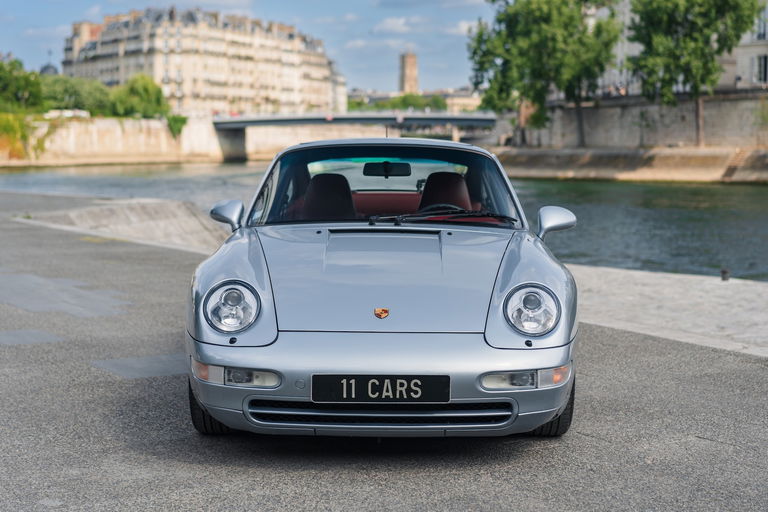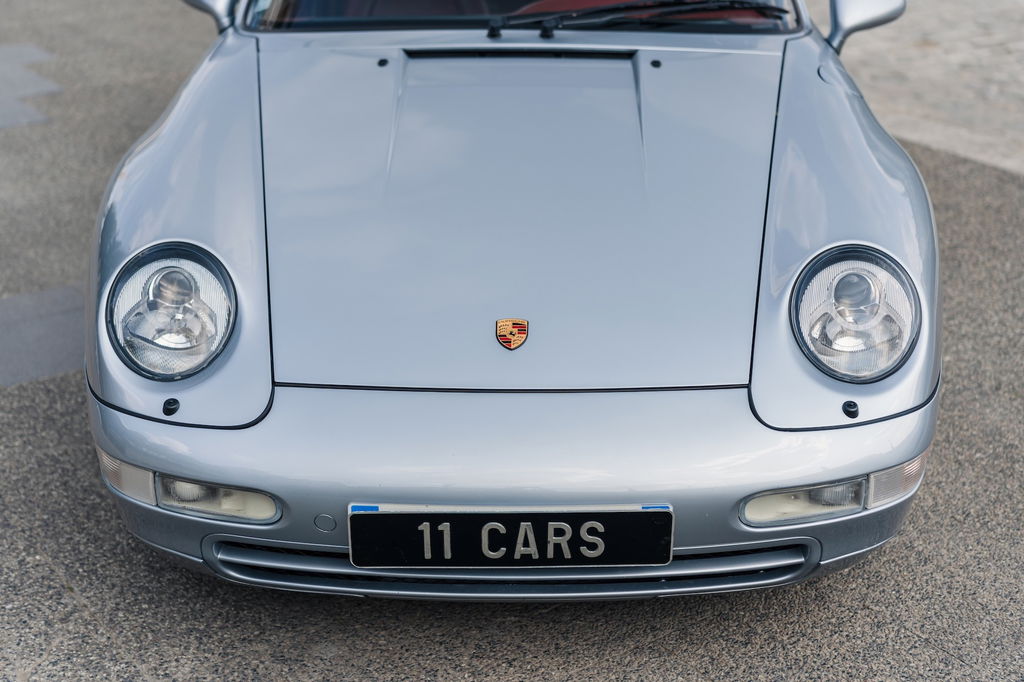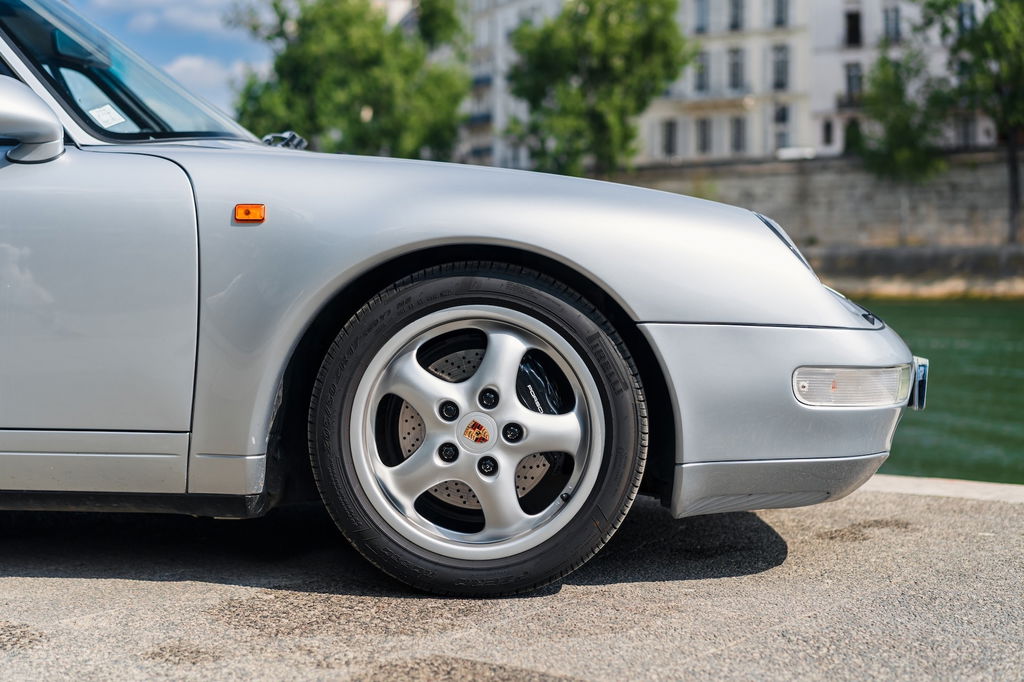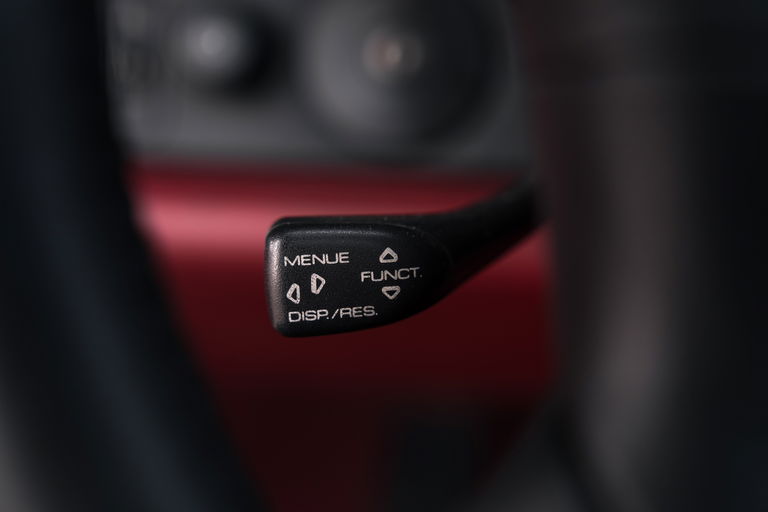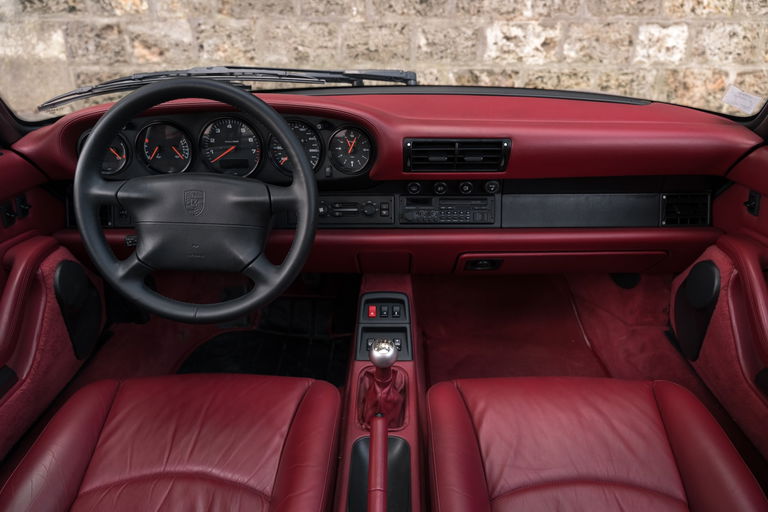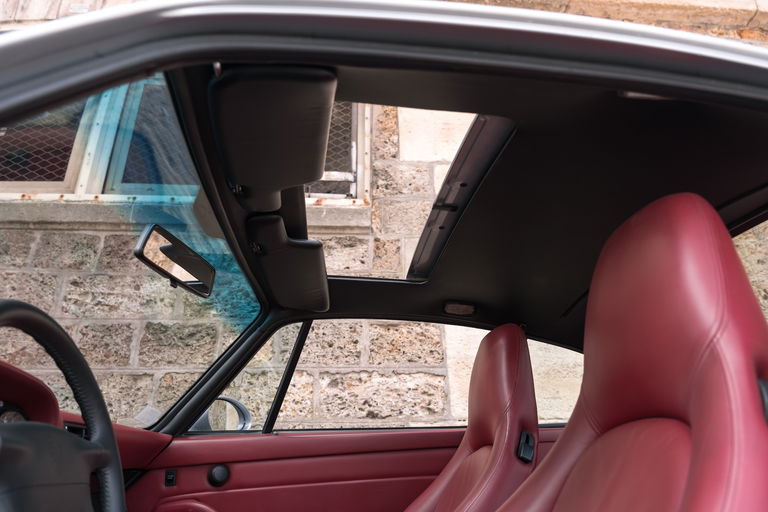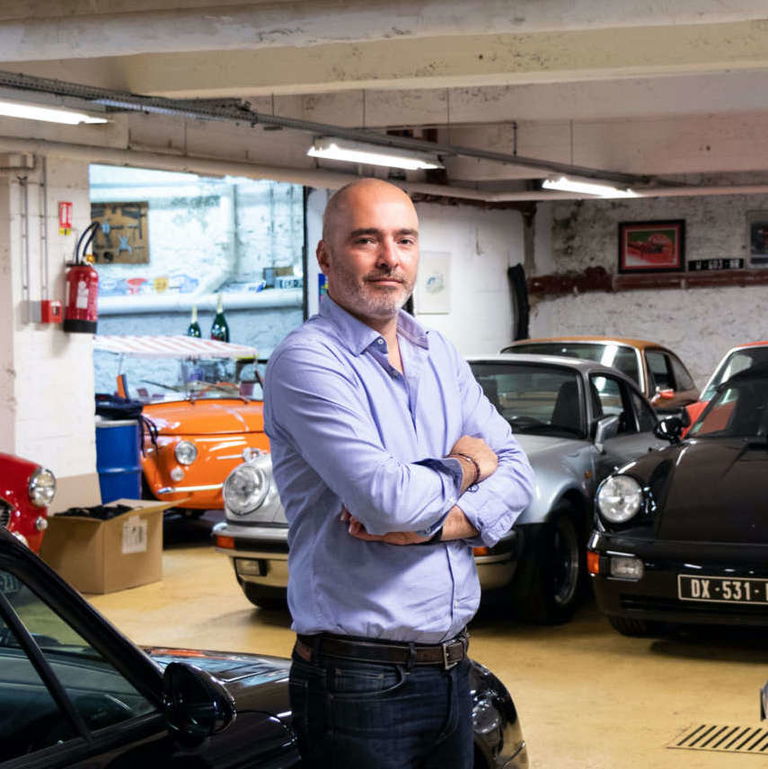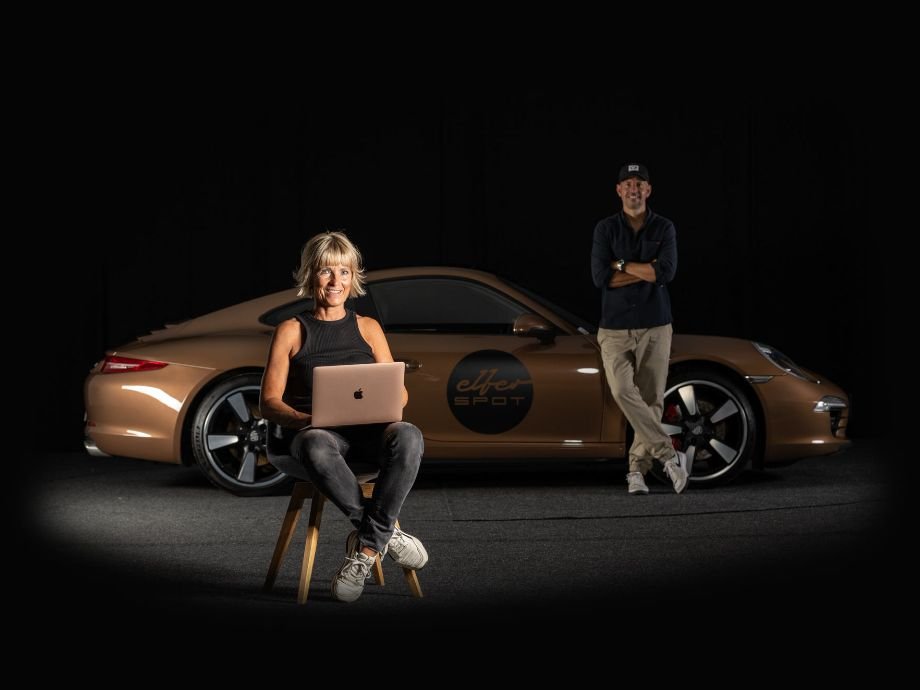Trade-ins and financing available.
After the 964 generation, Porsche presented the 911 type 993 in August 1993 at the Frankfurt Motor Show.
Its overall shape paid homage to the very first 911, while refining it. Significant work was done in Stuttgart to achieve a drag coefficient of 0.33 and significantly improved performance, with a top speed of 270 km/h. The 993 was a complete redesign over its predecessor, with only about 20% of parts carried over.
The 993 would be the last air-cooled Porsche and was produced until mid-1997, when it was replaced by the 996. It was available with rear- or all-wheel drive, narrow or wide body, and in coupe, cabriolet, targa, Turbo, and RS variants.
The 964 generation had introduced a new all-aluminum engine block with a 3.6L displacement, achieved through a bore of 100 mm and stroke of 76.4 mm. The 993 Carrera engine was an evolution of the 964 RS block, with reinforced crankshaft, pistons, connecting rods, and valves. The engine block interior was unlined and coated with Nikasil. Lubrication was dry sump, with an oil tank located in front of the rear wheel. The oil was cooled by a radiator (with a fan) at the front of the car when temperatures exceeded 87°C.
Another feature of this 3.6L engine was dual ignition per cylinder and hydraulic valve adjustment, which significantly reduced major service costs. Engine management and sequential multipoint injection were controlled by a Bosch Motronic 2.10 ECU. In addition, the dual catalytic exhaust system was completely new.
In its first version, the 993 Carrera 2 engine (type M64/05 for model year 1994 and M64/06 for model year 1995) produced 272 hp at 6100 rpm and 330 Nm of torque at 5000 rpm.
In 1995, the 993 Carrera 2 received a power upgrade to 285 hp at 6100 rpm and 340 Nm at 5250 rpm (engine types M64/21/22/23/24). These versions can be recognized externally by their more rectangular exhaust tips.
The 13 additional horsepower came mainly from the introduction of Varioram, a Porsche-patented system that adjusts the intake runner length based on engine speed.
At 4850 rpm and again above 5840 rpm, the ECU selects the optimal intake path and adjusts a resonance flap to optimize airflow wave dynamics, improving volumetric efficiency over a wider rev range.
Interestingly, Porsche removed Varioram from the 996 generation and instead used a redesigned plenum system (Variocam) to smooth out the torque curve. A new hydraulic clutch system also appeared, making gear shifts smoother and more refined.
In parallel with standard models, Porsche also offered the X51 power kit for the 993. In its first iteration, it increased power to 285 hp thanks to a modified 3.8L engine with larger valves, different cams, reinforced components, and a freer-flowing exhaust system. In 1996, the 993 Carrera adopted the Varioram intake system as standard to reach the same 285 hp – although one was a 3.6L with Varioram and the other a 3.8L X51.
And if you’re wondering: yes, this new 993 3.6L with Varioram also received the X51 option, bringing output to 300 hp, similar to the Carrera RS!






